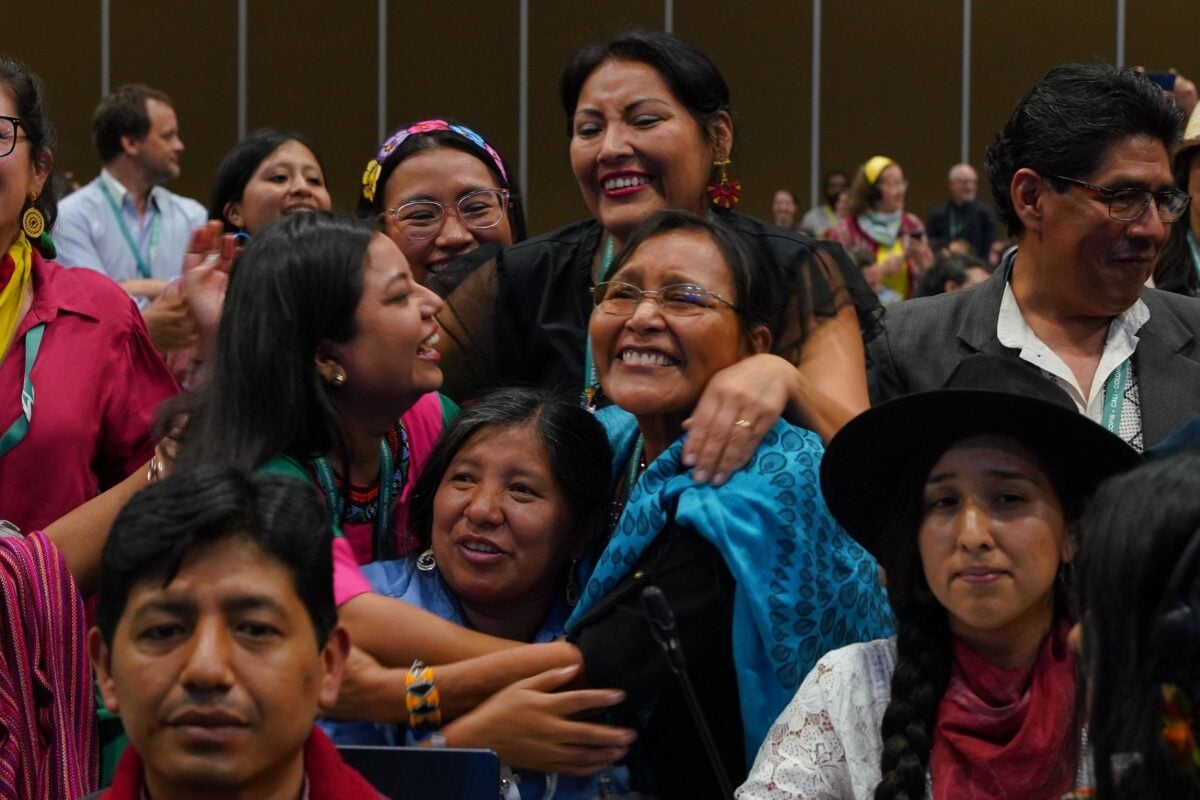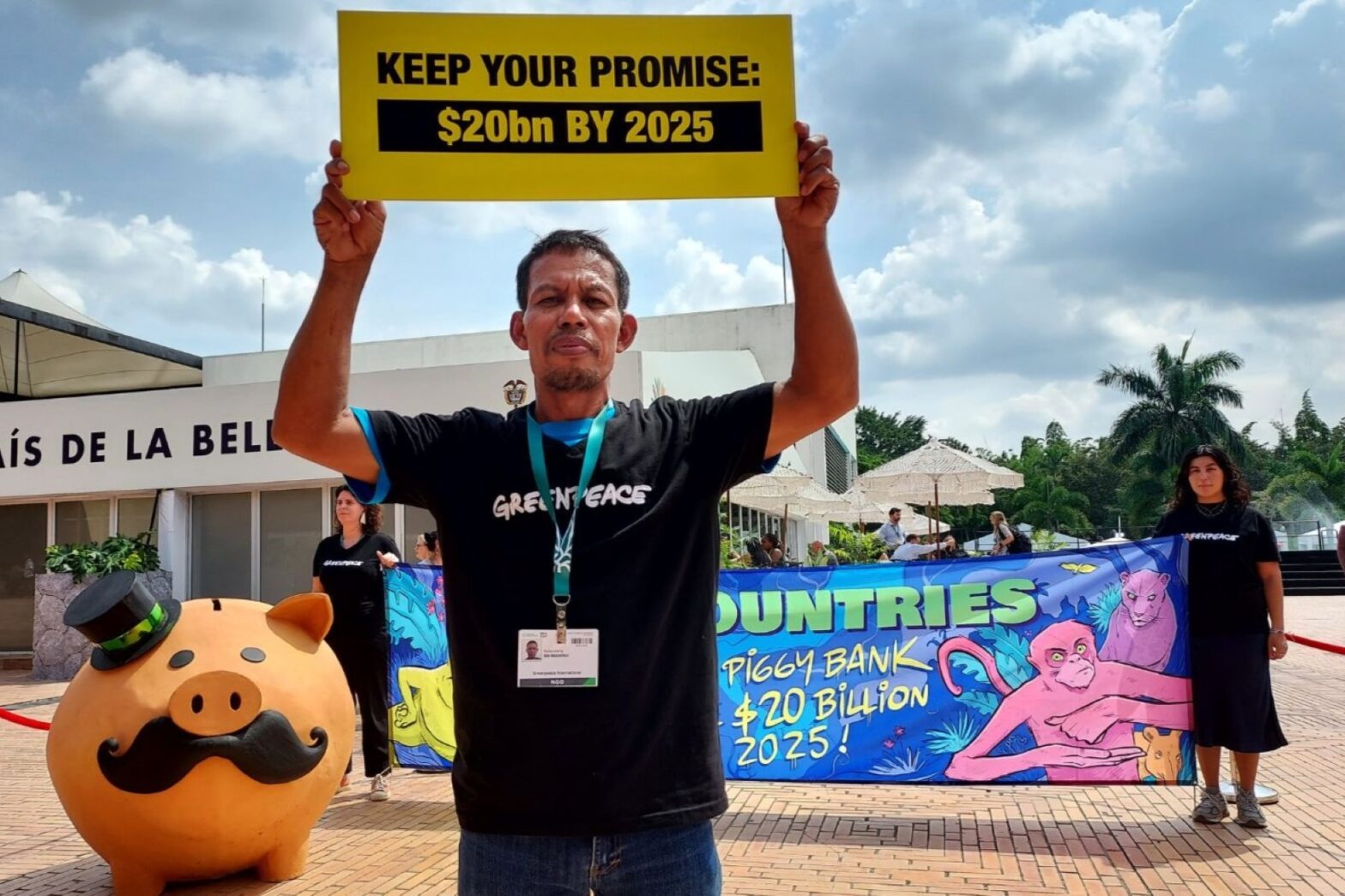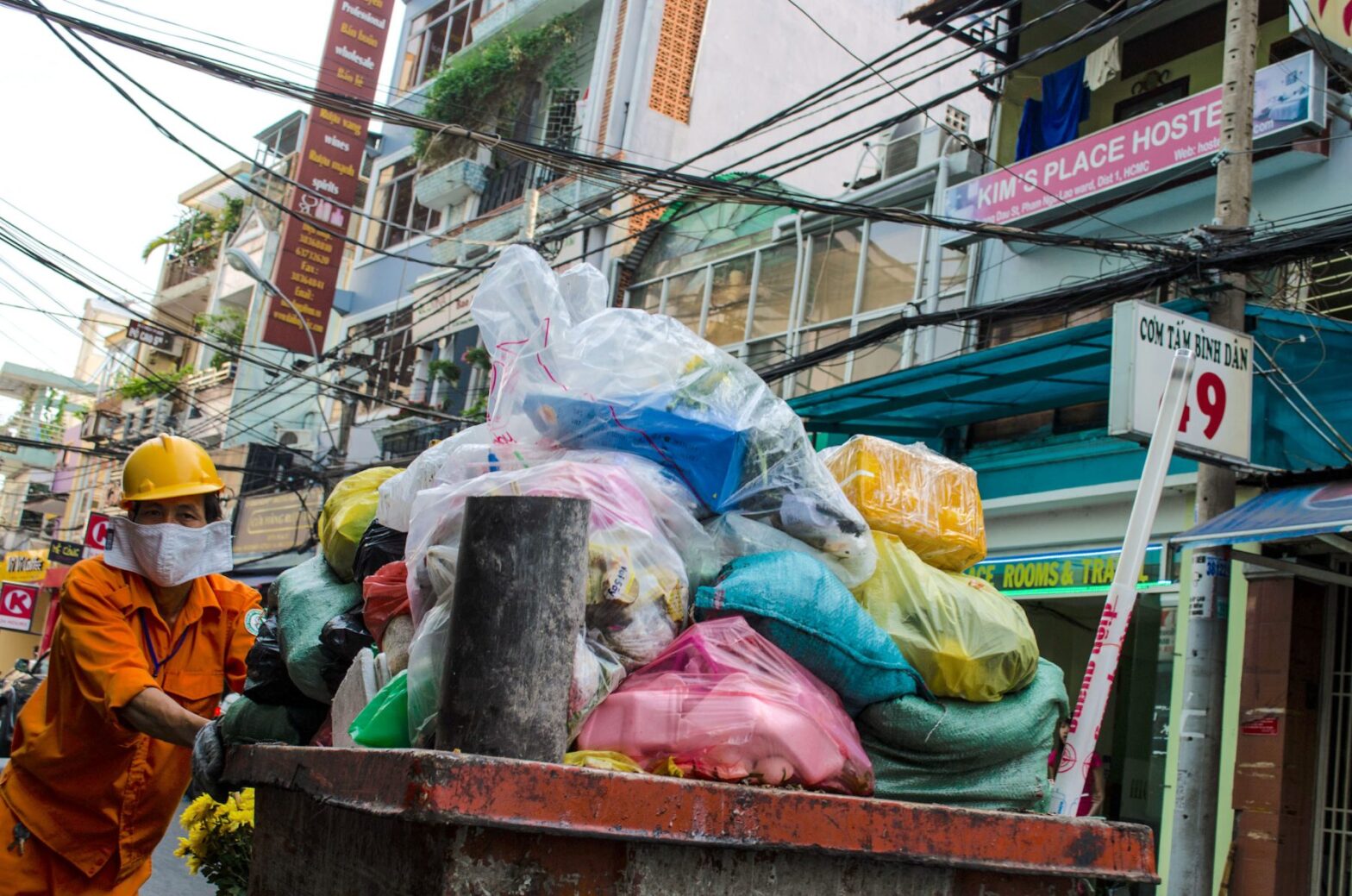CALI, COLOMBIA – COP16 has wound up and is moving forward with establishing a new subsidiary body on indigenous and local communities.
While this new move will empower their voices in global biodiversity negotiations, those in the Mekong region will continue to fight exclusion at the national level due to a significant gap in the protection of human rights and environmental defenders.
Late on Friday night, indigenous peoples and local communities worldwide celebrated a victory after years of advocacy to get their permanent body in the UN Convention on Biological Diversity (CBD).
This historic move makes the CBD the only UN environmental convention with a powerful platform for people to voice their demands and coordinate with state parties in defining criteria, actions, and programs related to knowledge, innovations, and practices associated with the convention.
Before this, indigenous representatives had to seek out delegates from various countries, sometimes waiting for hours in front of meeting rooms, just to ask for support when matters affecting them came up for adoption.
“The subsidiary body will be a platform for better partnership with all actors,” said Jennifer Corpuz of the International Indigenous Forum on Biodiversity. “The action will be faster. The decision-making will be faster and this drives with the urgent need for biodiversity action.”
Known as the Subsidiary Body for Article 8(j), this new entity was adopted by 196 government parties on the final day of the two weeks of intensive negotiation at COP16, or the 16th Conference of the Parties of CBD, in Cali, Colombia.
It was initially opposed by Russia and Indonesia for unclear reasons. But the issue was resolved after COP President Susana Muhamad, also Colombia’s Minister of Environment and Sustainable Development, arranged bilateral talks to move it forward.
The operational model of the new subsidiary body, likely to be co-chaired by government representatives and indigenous and local communities, will be discussed further and adopted in the next COP in Amenia two years from now.
COP16 brought together more than 23,000 participants to discuss the international legal instrument for conserving biological diversity, ensuring the sustainable use of its components, and promoting the fair and equitable sharing of benefits from genetic resource utilization.
The event also focused on assessing the countries’ implementation of Kunming-Montreal Global Biodiversity Framework (GBF) – adopted by the CBD’s party members in 2022 with 23 targets to halt and reverse nature loss by 2030.
Some other decisions were adopted in favor of indigenous peoples as well, including a new program of work that will set the path for GBF targets to be implemented with the engagement and respect of the groups.
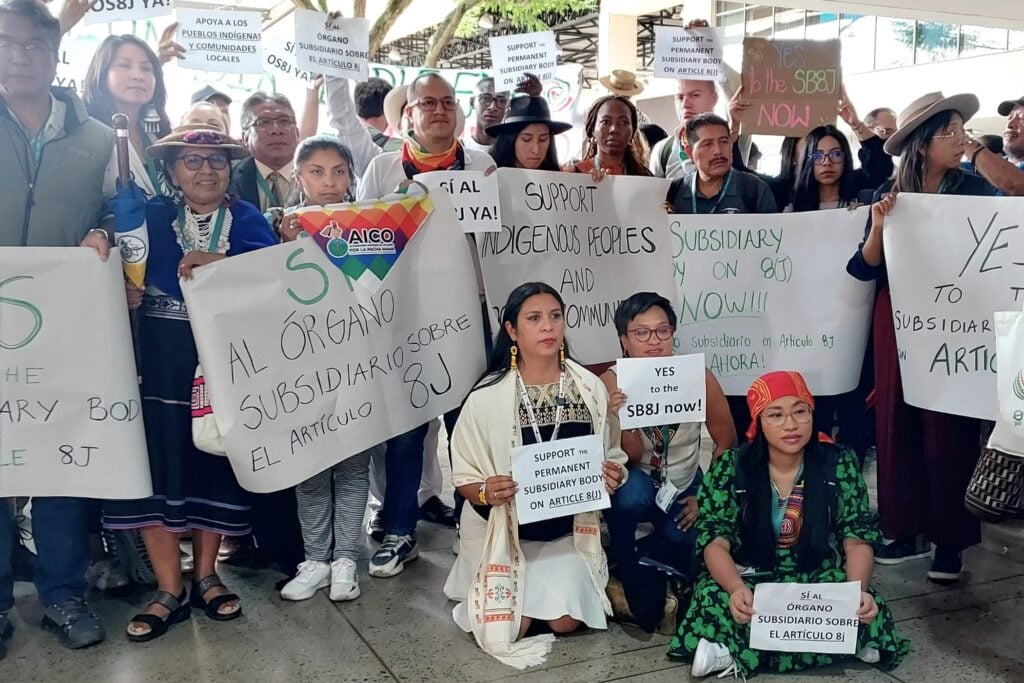
Though the setting up of the new subsidiary body is a significant achievement – especially since indigenous and local communities play crucial roles in biodiversity protection in the territories – the fight is far from over.
These communities will continue to face challenges when they return home, including in the Mekong region where national laws and limited freedom prevent them from fully participating in conservation efforts.
Conservation areas with ‘ethics’
One of the most notable challenges faced by indigenous peoples is when states establish conservation areas by forcibly removing indigenous and local communities from their territories.
This process often leads to harassment and human rights violations – from the operation to burn indigenous Karen villager’s houses in a Thai national park to the criminalization and forced eviction of Cambodia’s Bunong people from their forest land, and the lack of participation in Viet Nam’s plan to build a reservoir in forest conserved by the Cham people.
While the GBF target set a goal to increase conservation areas by at least 30% of land, water and sea by 2030 – known as the 30×30 target – concerns have arisen about whether states might use similar approaches to establish new conservation areas.
There is also uncertainty about how the new subsidiary body can play a role in pushing for solutions to address this issue.
“We want full and effective participation in establishing conservation areas, that respect us and adopt a human rights-based approach,” said Pirawan Wongnithisathaporn, an indigenous Karen from northern Thailand who represented the Asia Indigenous Peoples Pact Foundation.
“When the national laws do not recognize us, how can we effectively participate in the decision-making process.”
A 2020 study pointed out that at least 35% of the world’s remaining pristine forests were within indigenous peoples’ lands. It also found that forest loss rates were lower when indigenous peoples were present on the land, indicating their critical role as environmental defenders.
This role is often overlooked when discrimination and human rights violations persist due to the political and social context at the national level.
All countries in the Mekong region – Cambodia, Laos, Myanmar, Thailand and Viet Nam – voted in favor of the Declaration on the Rights of Indigenous Peoples adopted by the UN General Assembly in 2007.
However, in practice, states do not recognize the concept of indigenous peoples and often brand them as “ethnic minorities” – a term that rejects their origins on the land.
This resonated during the high-level meeting at COP16 this week, in which governmental representatives from Cambodia, Laos and Thailand gave speeches on their commitment, but none mentioned the engagement of indigenous peoples and rather used the term “all stakeholders.”
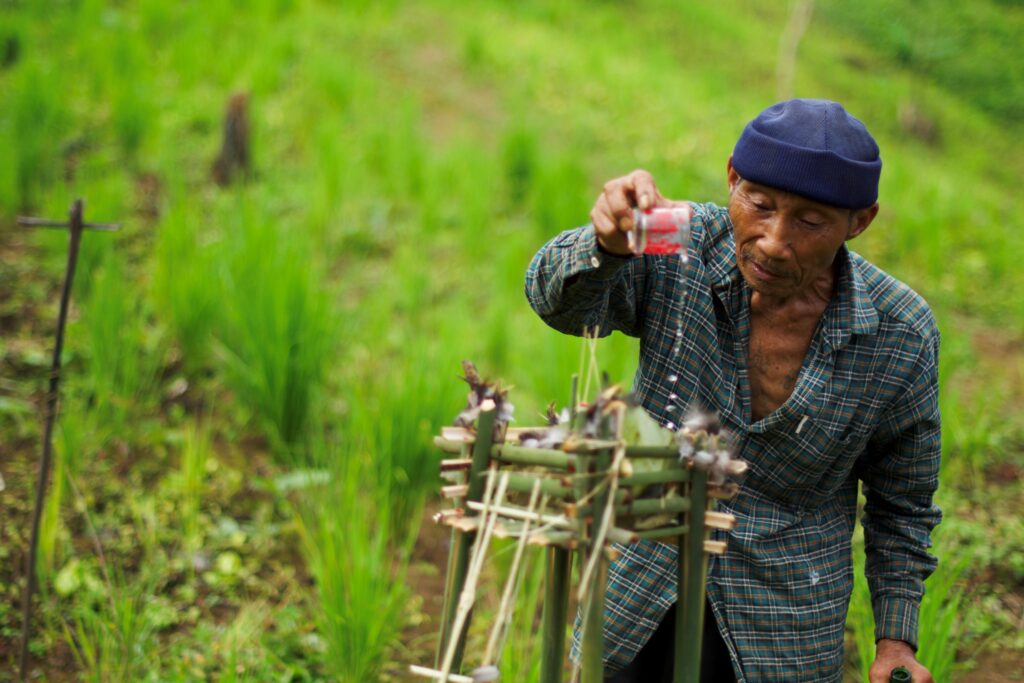
A report called Indigenous World 2024, published by the International Work Group for Indigenous Affairs, revealed that indigenous peoples in the Mekong countries, mostly run by authoritarian states, have continued to face discrimination and forced evictions under national laws.
In Cambodia, the National Assembly approved the amendment of the law in July that included a change in terminology, replacing “indigenous peoples” with “local communities.”
Indigenous peoples networks in Thailand, home to an estimated 6.1 million indigenous population, have struggled to push for the bill to protect their rights and land tenure, known as the “Indigenous Peoples Rights Protection Bill.”
During the lower parliament meeting on September 25, lawmakers voted to drop the bill and requested the bill-drafting committee to consider cutting the term “indigenous peoples” to ensure the country’s security and order.
The bill proposes the establishment of a council of indigenous peoples, a body that would promote their rights and traditional knowledge as well as act as a coordinating body on issues relating to the group.
If established, the council would play a crucial role in providing recommendations relating to the Subsidiary Body on Article 8(j) and GBF targets, including the one on increasing conservation areas.
Solange Bandiaky-Badji, President of the Rights and Resources Initiative, said during a COP16 high-level panel discussion that global efforts to expand conservation areas “must be done with ethics.”
“When we’re talking about protected areas, we’re thinking about the land and forest with no people inside,” she said.
“Indigenous and local communities have been criminalized and killed in the name of conservation. People have been the victims of the national laws in the name of conservation. That should stop.”
Breaking siloes
According to the Protected Planet database, there are 582 protected areas across the five Mekong countries, covering approximately 14.5% of the land and 1.4% of marine and coastal areas.
Although the Mekong countries commit to achieving 30×30 goals, the tedious process of declaring new protected areas will prevent them from achieving this by 2030.
Countries are now looking at Other Effective Area-Based Conservation Measures (OECMs) as the priority options, especially Thailand, when its COP16 delegate announced the setting up of OECMs as the national target.
Formally defined through the CBD in 2018, OECMs are areas outside protected areas that the International Union for Conservation of Nature (IUCN) describes as “areas that are achieving the long-term and effective in-situ conservation of biodiversity.”
“There are many sites outside protected areas that conserve the long-term conservation of biodiversity, and they deserve to be supported,” said Harry Jonas, Senior Director of Conservation Areas, WWF-US, who took part in designing the IUCN guidelines for establishing OECMs.
“To identify sites correctly requires working closely with the local actors who govern these important places to assess the sites and better understand how they are being conserved.”
According to the IUCN, eligible areas must meet four criteria: they must not be traditional protected areas; be governed and managed; contribute long-term and effective support to biodiversity conservation; and help preserve ecosystem functions and services, as well as cultural, spiritual, socioeconomic and other locally relevant values.
At present, there are 354 OECM sites in Asia and the Pacific, with half of these located in the Philippines where indigenous peoples are widely present. None of the Mekong countries have started the sites.
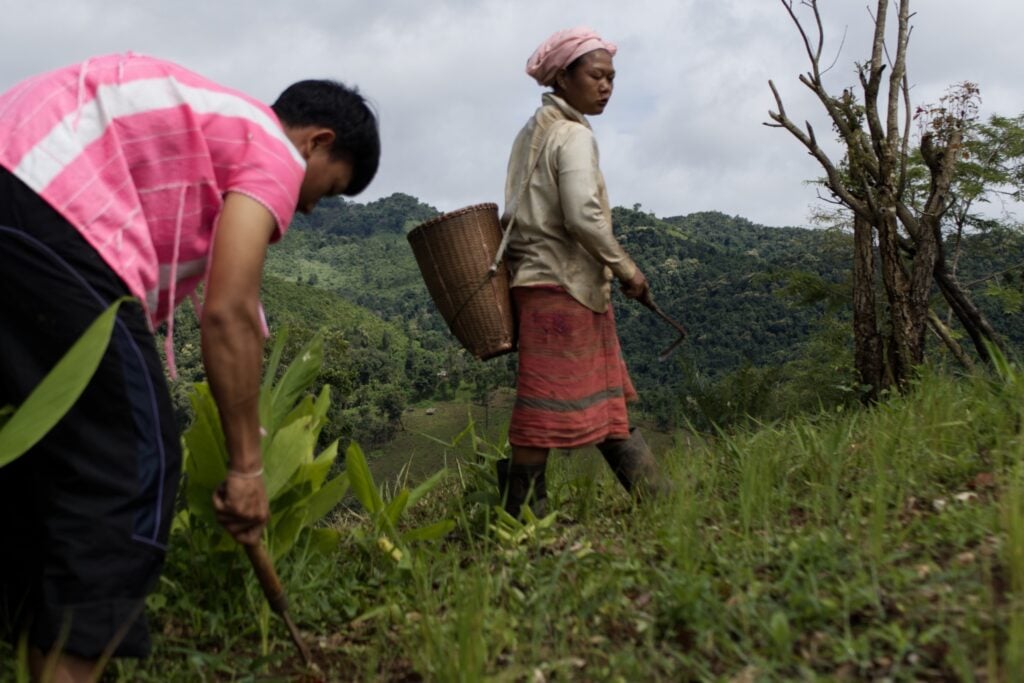
Despite the guidelines, Pirawan from the Asia Indigenous Peoples Pact Foundation raised a common concern among her group that OECMs could become “another form of land grabbing,” especially in the context of limited democracy and freedom.
Indigenous groups have advocated for “Indigenous Traditional Territory” as part of the 30×30 target, allowing them to be involved in the site selection and management process from the beginning to the end, as well as setting up the systems to ensure governance and transparency.
“If OECMs do not recognize the Indigenous Traditional Territory and there is no good governance in place, this raises concerns among our communities,” she said.
“We need to ensure the quality of new conservation areas. Quality means that we are not evicted, harassed or arrested in the process of establishing these areas. Human rights should be put as the center. Conservation should respect the relationship between humans and nature.”
Engaging indigenous territory in conservation has already been voluntarily initiated in some countries, including Canada, where the government has established conserved areas led by indigenous peoples, their laws and knowledge systems. It has also launched a program that provides funds for the groups to protect biodiversity.
Elias Abourizk, the Director General of Biodiversity Policy and Partnerships under Canada’s Environment and Climate Change Department, noted at a Cali side event that the assessment found every dollar invested in the program had generated $2.80 in returns, through benefits from biodiversity and related ecosystem services.
“They [member states at Cop16] should recognize the role of environmental human rights defenders and enhance their protection,” said lze Brands Kehris, the UN Assistant Secretary-General for Human Rights, during a press conference on Wednesday.
“They should provide parties with the indispensable technical and scientific support they need to ensure biodiversity actions comply with human rights obligations, breaking down the silo between human rights and environmental spheres.”
This story was produced as part of the 2024 CBD COP16 Fellowship organized by the Internews’ Earth Journalism Network.


